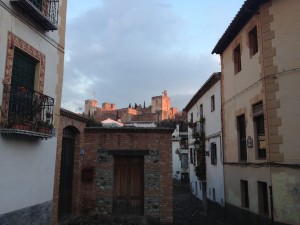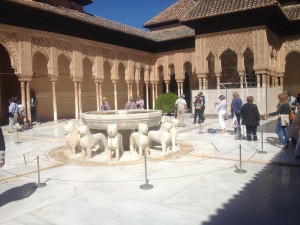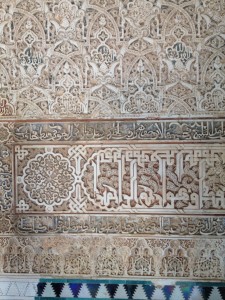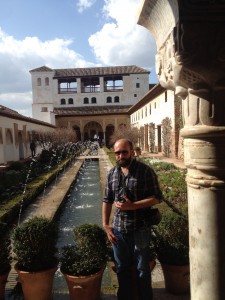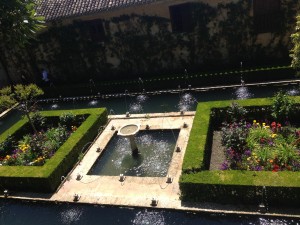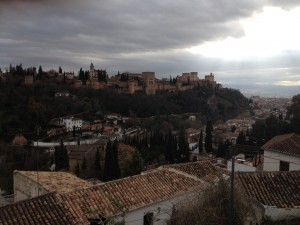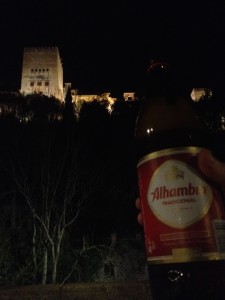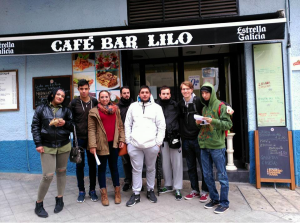If you talk to any tourist in Granada, they’ll tell you how they are going to/ have been to the Alhambra and that they bought their tickets months in advance. The Alhambra, the royal city of the various Sultans of Granada, has giant gardens of flowers, magnificent palaces and earth-colored walls that glimmer under the Andalucían sun. With more than eight thousand visitors a day, it is a hub of tourism and a source of pride for the city. It’s such an attraction that tickets are already sold out through parts of October.
Besides the fact it is a great place to people watch tourists dressed in crocs and desert hats, it is also a wonder of architecture. Every time I walk past its giant earth-tone walls, I feel insignificant and amazed by the ingenuity of the builders who constructed this gem. Here’s a little overview of the Alhambra so hopefully you can feel some awe as you read this through your computer screen with blurry eyes. The Alhambra is divided into four parts:
The Alcazaba: This was the first part of the Alhambra that was built and was originally a small city complete with houses and baths. However, as the city expanded, the Alcazaba became a military fortress where the Sultan could retreat to if the palaces were overrun.
The Palaces: The palaces are actually three different palaces, each with its own unique architectural style. The two main palaces feature sprawling patios, beautiful throne rooms and intricate plaster and ceramic designs. The palaces are a place where you gaze with wonder but also think to yourself, this must have taken forever to build. For example, the ceramic pieces in the wall were each cut to shape using intricate designs, fired, painted and then placed in the wall, a time consuming and logistical nightmare.
The Medina: The Medina was the neighborhood for all the servants and slaves who worked in the royal city. It is important to remember that the Alhambra was place where only people with royal business or those who worked within its walls were allowed to enter. Thus, as average (or even above average) people, we probably would never be able to enter the city.
The Generalife: As if the city wasn’t enough, there are also sprawling gardens and another palace that make up the Generalife, the Sultan’s summer home, just outside the walls of the main city. To give you an idea of the intentions behind the building of the Generalife, the Sultan constructed it to resemble paradise, with decadent gardens of colorful flowers and a stairway lined with streams of water in the bannisters. When I walked in to the Generalife, I quickly decided that I would have enjoyed being a sultan and living in the palace, my summer allergies be damned.
The Alhambra stands as a testament to a civilization that flourished long ago, before gothic churches, the Granada Cathedral and the Christian rulers. When the Christians conquered Granada, they were so in awe of the Alhambra that they chose to keep most of it intact. Since then, the Alhambra has continued to enamor those who lay eyes on it, including my friends and I who have viewed it from every angle. Whether it is strolling the grounds and watching the wild cats run through along the paths, climbing the mountain directly behind it and staring down at its sprawling buildings or taking it in from the calm of the square far below at night, the Alhambra is true beauty that I am captivated by every time I see it. Plus, if you ever want to open a business in Granada, you can simply put Alhambra in the name and it’ll fit right into the city.
